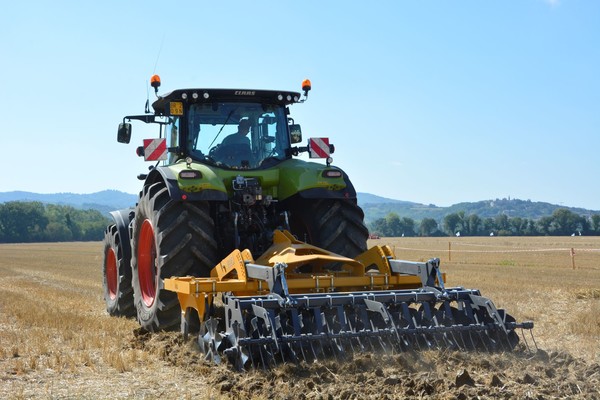
Agricultural machinery, market recovery expected
Compared to other production sectors the primary sector is the one that has shown greater resilience. Global production of grains and milk increased, as did the prices of the main agricultural commodities. Agriculture and mechanization are strategic in sustaining the population, but the pandemic has held back the agricultural machinery market, where a recovery is expected in the coming months
The Covid emergency has given new centrality to agriculture which, unlike other productive activities, has shown greater resilience in the face of the pandemic. In a global environment characterized by a generalized decline in many sectors, which resulted in a significant drop in world GDP (-4.5% at the end of the year according to the OECD), the primary sector instead increased its production capacity. This fact is highlighted by Alessandro Malavolti, president of FederUnacoma, at the Federation's annual General Meeting held in late September in Bologna, where he took stock of the main trends in the primary sector and the market for agricultural machinery.
According to FAO estimates - noted the president of FederUnacoma - in 2020 global grain production should reach a record value of 2,756 million tonnes (+2.2% on 2019), with an increase also in demand (+2.4%) and world trade (+1.6%). Milk production was also positive (+0.8%), while meat recorded a drop of 1.7% due to contingent factors. The prices of the main commodities also rose, with meat, poultry and rice showing increases of 8.3%, 7.7% and 8.2% respectively.
The food insecurity created by the pandemic - according to the FAO, by 2020 the number of undernourished people could grow by 130 million - and the growing demand for food in different areas of the world give agriculture, and with it agricultural mechanization, an increasingly strategic role also to guarantee social stability. "In this landscape - said Malavolti - agricultural machines are an essential tool for enhancing production and safeguarding the territory. Thanks to the research and innovation activities of the agromechanical industries, today's agricultural machinery uses increasingly efficient and eco-friendly technologies.
Despite playing a strategic role, the world mechanization market is still experiencing a transition phase, with different trends from country to country.
The first half of the year saw an increase in tractor sales in the United States (+10.4%) and Russia (+7%), a certain stability in Canada (+0.3%), and a setback in Brazil (-5%). The most significant decreases are recorded on the Asian markets: Japan (-29.5%), Korea (-7.3%), and India (-11.3%). Turkey is a case in itself, recording a 75% increase as a rebound after the collapse of recent years.
The minus sign prevails in Europe where the market contraction amounted to 12.1%, corresponding to 68,831 registered tractors.
In a global context characterized by a climate of uncertainty, some climate surveys suggest a possible trend reversal. This is true especially for Europe, where recent surveys by CEMA, the association of European agricultural machinery manufacturers, forecast a market recovery in Italy, Switzerland, Poland, Austria and the Scandinavian countries in the next six months, while the United Kingdom and Romania they should remain at fairly low levels.








